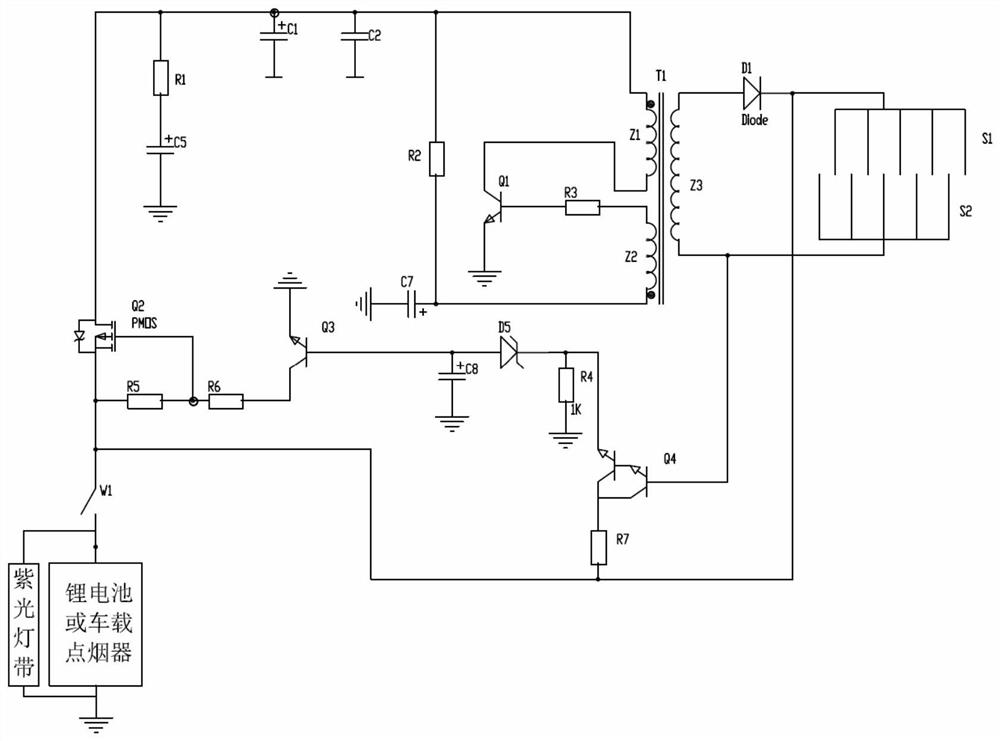Energy-saving deinsectization device
An energy-saving and insect-killing technology, which is applied to devices for catching or killing insects, electrical components, animal husbandry, etc.
- Summary
- Abstract
- Description
- Claims
- Application Information
AI Technical Summary
Problems solved by technology
Method used
Image
Examples
Embodiment Construction
[0023] The specific implementation manners of the present invention will be further described in detail below in conjunction with the accompanying drawings and embodiments. The following examples are used to illustrate the present invention, but are not intended to limit the scope of the present invention.
[0024] Such as Figure 1 to Figure 3 As shown, the energy-saving disinsection device of the present invention includes a disinsection circuit, specifically including a high-voltage pack T1, a detection unit, a control unit, a high-voltage oscillation unit, a boost unit, a voltage stabilizing circuit and a power supply terminal; the high-voltage pack T1 It includes a first primary winding Z1, a second primary winding Z2 and a secondary winding Z3.
[0025] Such as figure 2 As shown, specifically, the high-voltage oscillating unit includes a first primary winding Z1, a second primary winding Z2, a resistor R3, an electrolytic capacitor C7, a transistor Q1, and a resistor ...
PUM
 Login to View More
Login to View More Abstract
Description
Claims
Application Information
 Login to View More
Login to View More - R&D
- Intellectual Property
- Life Sciences
- Materials
- Tech Scout
- Unparalleled Data Quality
- Higher Quality Content
- 60% Fewer Hallucinations
Browse by: Latest US Patents, China's latest patents, Technical Efficacy Thesaurus, Application Domain, Technology Topic, Popular Technical Reports.
© 2025 PatSnap. All rights reserved.Legal|Privacy policy|Modern Slavery Act Transparency Statement|Sitemap|About US| Contact US: help@patsnap.com



